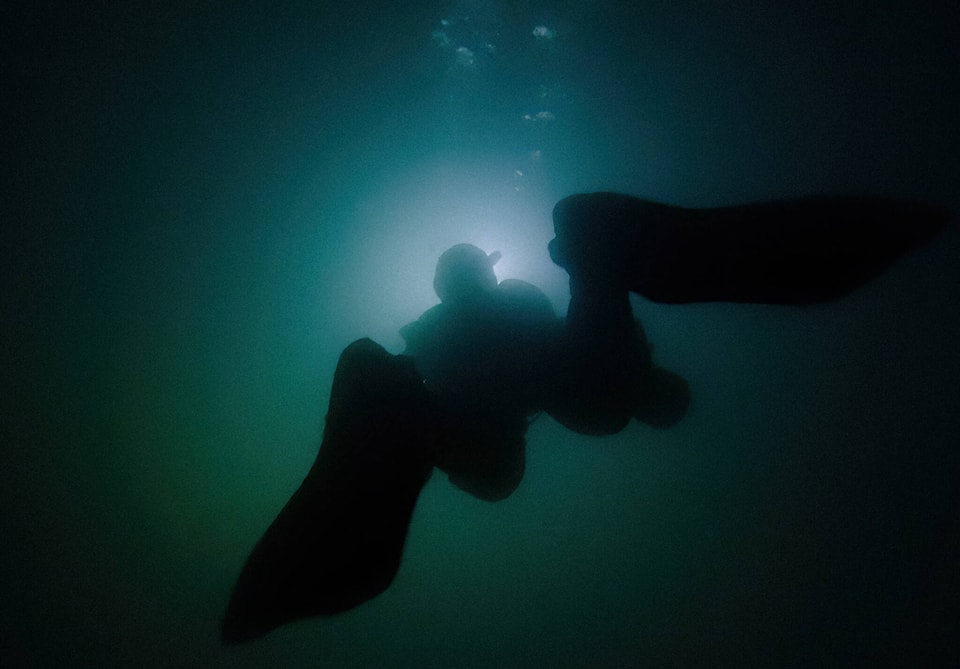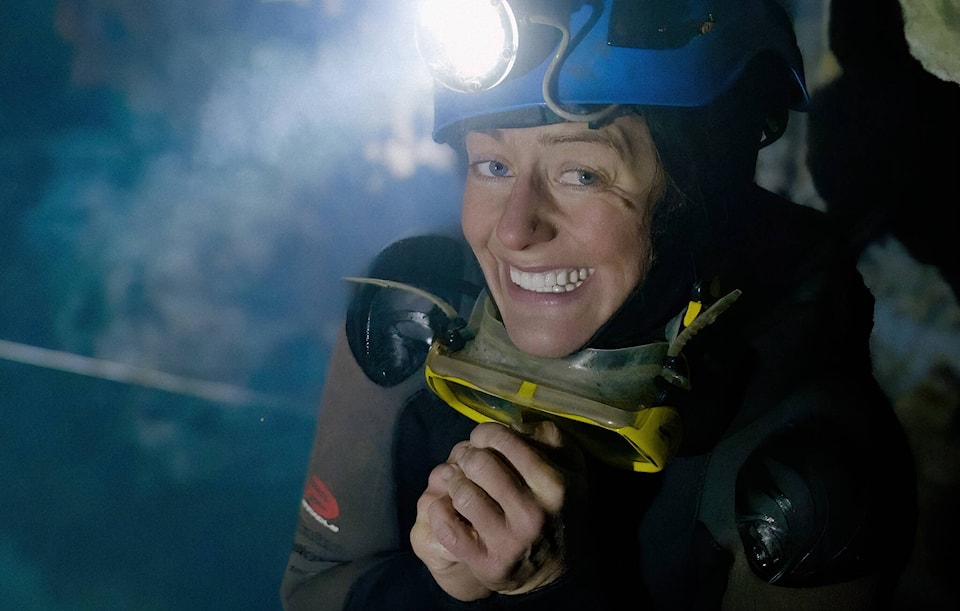A team of passionate adventurers who have spent more than a decade exploring the Bisaro Anima cave near Fernie are now the subject of new documentary called Subterranean, showing at Banff Mountain Film Festival Nov. 4
The film, released in April, follows multiple groups of explorers who are seeking to break caving records. The group in Fernie, lead by Katie Graham, beat a personal depth record by ascending further into the Bisaro Anima cave network than ever before.
Bisaro Anima is located near Heiko’s Trail. It is the deepest cave in Canada and the continental U.S.
The team climbed up steep rock faces, crawled through claustrophobia-inducing tight spaces and explored cold damp caverns. Parts of the cave network were underwater. Graham reached her depth record by scuba-diving through these.
“It’s cold. It’s dark. It’s drippy all the time. Everything’s covered in mud. It’s quite extensive, so it changes character as you go. Sometimes you’re crawling and then sometimes there’s these massive chambers. You’re rappelling down 100-metre-long pits. Sometimes the rock is really unstable,” Graham says.
Graham had to complete scuba training in order to navigate through the cave waters.
“You only see what you can shine the light on,” she recalls.
“It’s absolutely dark. The water’s really cold and once you go in you’re just completely on your own. You have to be 100 per cent self-sufficient and confident.
“You really have to be hyper-focused on the technical aspect of what you’re doing, and you’re trying to be aware of your surroundings. There’s so many risks and you’re trying to manage them and keep yourself in a really positive and systematic head space, going through checklists and make sure you’re doing everything right. You really have to keep yourself grounded.”
The film was lead by Vancouver film producer Jenny Rustemeyer and director François-Xavier De Ruydts. The film crew accompanied the team into the cave on a number of trips, sometimes for as long as nine days, and they all slept in the cave overnight.
De Ruydts reports that it was a challenging film to make. Filming without much light and no access to power was difficult, he said, and he had to be strategic about his filming to ensure he had enough power in his equipment to last the entire trip.
Special equipment was required in certain areas of the cave network. When Graham went underwater, she was filmed by a drone.
It was rewarding nevertheless.
“Around every corner, you’ll find something fascinating because it’s so different from what you’ve experienced before. Just darkness. You turn off your lights and it’s black…All the cave formations. There are stalactites and stalagmites,” he said.
The cave was only a few degrees above zero, with intense humidity. It was also wet and the crew had to wear their damp clothes to bed in order for them to dry by morning. They slept in covered hammocks to keep themselves warm.
“You have to go to bed with your wet stuff. Otherwise, in the morning, it’s still going to be wet. The only way to dry stuff is to wear it. Usually sleeping in it is the easiest,” De Ruydts says.
Subterranean has reached screens across the world and will premiere Nov. 7 on Knowledge Network in British Columbia.
De Ruydts says caving represents a niche corner of the market among adventure documentaries.
“People usually come to see mountaineering or climbing … It’s refreshing on the festival circuit because it’s different,” he says.

Graham says the team hopes the documentary will give more exposure to the sport of caving and the science behind it.
“They’ve been scientifically investigating Bisaro Anima since 2012 and have published a survey of the cave, which they continuously update as they gather more information.
“Seeing the movie come out and seeing it well-received, that’s actually really nice,” she says.
“The goal was really just to make the science and sport of caving better-understood. Having that positive reception on the movie feels great.”
It was only just a week ago that the team made a new discovery — a circular tube-like passage that provides clues about the climate during the Ice Age.
“We found a passage that is a five-meter-wide diameter circular tube with lots of scallops in the wall. What that tells us is that there was an incredible volume of water with a glacier on top that was just pushing an incredible amount of water through that mountain,” she explains.
“There’s already lots of theories, hypotheses about what the general climate was like (during the Ice Age) and you can use the cave as proof for the micro-climate for that very particular area. You can get evidence to help support those bigger theories.”
The group has explored approximately seven kilometres of cave network and plunged over 600 meters deep since they started their research, but they still haven’t found an end yet. Graham said they’re certain there are more dry passages beyond the body of water that she scuba-dived through, which they haven’t been able to reach due to oxygen limitations.
They’ve also found bushy-tailed woodrats in the cave in really deep areas, which tells them that there are entrances to the cave they haven’t found yet.
Graham plans to continue her training in Mexico with specialized equipment, so she can dive even deeper next year.
“As it gets technically more difficult, it challenges me to up my game and do more training and get better. It made me focus,” she says.
“You kind of feel like you’re travelling back in time and you’re trying to figure out what the story is behind it.”
Plan your adventures throughout the West Coast at westcoasttraveller.com and follow us on Facebook and Instagram @thewestcoasttraveller. And for the top West Coast Travel stories of the week delivered right to your inbox, sign up for our weekly Armchair Traveller newsletter!
